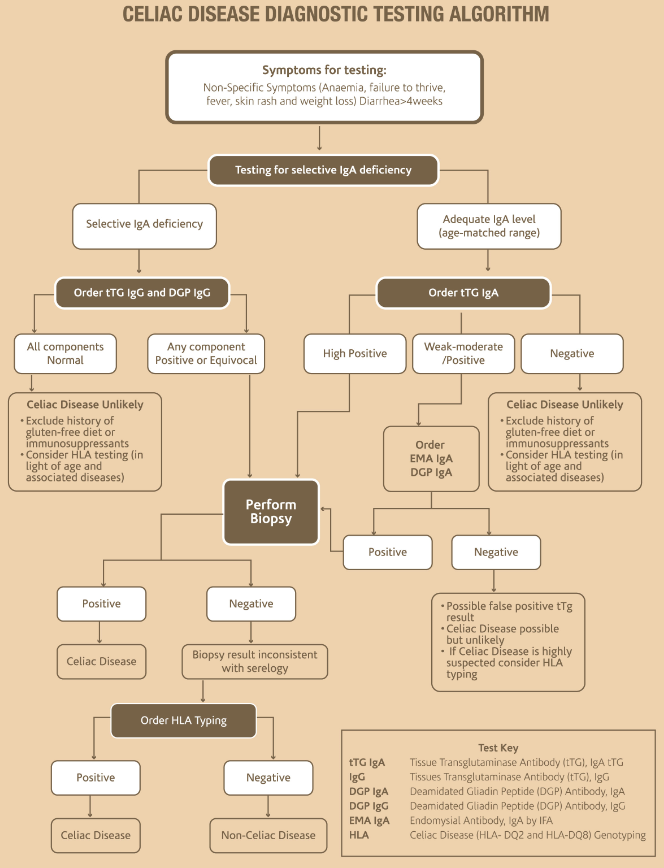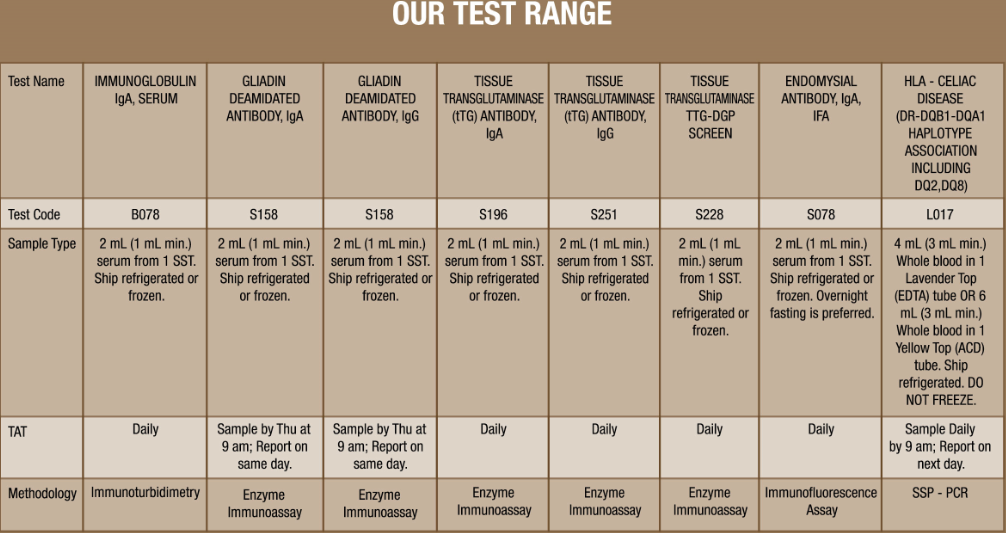An Introduction to Celiac Disease

Celiac Disease is a serious genetic autoimmune disorder in which the ingestion of gluten damages the small intestine. Please ensure the treatment of your patients at the earliest for a healthy and carefree life ahead.
INTRODUCTION
Celiac Disease (CD) in India occurs more often in children than in adults. Over the past decade, awareness of Celiac Disease has increased substantially in India and parallel to this, reported cases also show an upward trend both in children and adults. On an epidemiological basis, CD in India is prevalent among predominantly wheat-consuming states such as Punjab, Haryana, Delhi, Rajasthan, Uttar Pradesh, Bihar and Madhya Pradesh.
As per ACG Guidelines, recommendations for whom to test for Celiac Disease:
1. Patients with symptoms, signs or laboratory evidence suggestive of malabsorption, such as chronic diarrhea with weight loss, steatorrhea, postprandial abdominal pain, and bloating, should be tested for CD (Strong recommendation, High level of evidence).
2. Patients with symptoms, signs, or laboratory evidence for which CD is a treatable case should be considered for testing for CD (Strong recommendation, Moderate level of evidence).
3. Patients with a first-degree family member who has a confirmed diagnosis of CD should be tested, if they show possible signs or symptoms or laboratory evidence of CD (Strong recommendation, High level of evidence).
4. Consider testing of asymptomatic relatives with a first-degree family member who has a confirmed diagnosis of CD (Conditional recommendation, High level of evidence).
5. CD should be sought among the explanations for elevated serum aminotransferase levels when no other etiology is found (Strong recommendation, High level of evidence).
6. Patients with Type I Diabetes Mellitus (DM) should be tested for CD, if there are any digestive symptoms, or signs, or laboratory evidence suggestive of CD (Strong recommendation, High level of evidence).
As per ACG Guidelines, recommendation for diagnosis for Celiac Disease:
1. Immunoglobulin A (IgA) Anti-tissue Transglutaminase (TIG) antibody is the preferred single test for detection of CD in individuals over the age of 2 years (Strong recommendation, High level of evidence).
2. When there exists a high probability of CD wherein the possibility of IgA deficiency is considered, total IgA should be measured. An alternative approach is to include both IgA and IgG-based testing, such as IgG-Deamidated Gliadin Peptides (DGPs), in these high-probability patients (Strong recommendation, Moderate level of evidence).
3. In patients in whom low IgA or selective IgA deficiency is identified, IgG-based testing (IgG DGPs and IgG TTG) should be performed (Strong recommendation, Moderate level of evidence).
4. If the suspicion of CD is high, intestinal biopsy should be pursued even if serologies are negative (Strong recommendation, Moderate level of evidence).
5. All diagnostic serologic testing should be done with patients on a gluten-containing diet (Strong recommendation, High level of evidence).
6. Antibodies directed against native gliadin are not recommended for the primary detection of CD (Strong recommendation, High level of evidence).
7. Combining several tests for CD in lieu of TTG IgA alone may marginally increase the sensitivity for CD but reduces specificity and therefore are not recommended in low-risk populations. (Conditional recommendation, Moderate level of evidence).
8. While screening children younger than 2 years of age for CD, the IgA TTG test should be combined with DGP (IgA and IgG) (Strong recommendation, Moderate level of evidence).


References
1. Rubio-Tapia, A. et al. ACG clinical guidelines: diagnosis and management of Celiac Disease. Am. J. Gastroenterol. 108, 656-676; quiz 677 (2013).
2. Torres, M.1., Palomeque, T. & Lorite, P. Celiac Disease and Other Autoimmune Disorders. (2015). doi:10.5772/60695.
3. Yachha, S. K. Celiac Disease: India on the global map. J. Gastroenterol. Hepatol. 21,1511-1513 (2006).












